Helliwell habitat restoration and fuel management update
By Chris Junck, GOERT, Taylor’s Checkerspot Butterfly Recovery Project Team
Ecological restoration work that began in 2015 continues in Helliwell Provincial Park. With guidance from the BC Ministry of Environment and Climate Change Strategy, BC Parks and the Taylor’s Checkerspot Butterfly Recovery Project Team, habitat enhancement is achieved through a combination of conifer removal, pruning, weeding, and planting/seeding of native vegetation. A broad variety of species are used in the restoration, including common camas, woolly sunflower, harsh paintbrush, small blue-eyed Mary, and others that are important host plants for Taylor’s checkerspot butterflies. With support from Wildlife Preservation Canada, the Vancouver Zoo has raised and released the endangered butterflies annually in the restoration areas since 2020. Several other at-risk and uncommon coastal bluff species benefit from this project, such as dun skipper and propertius duskywing butterflies, western bumble bee, western screech-owl, bats, and numerous other animals and plants.
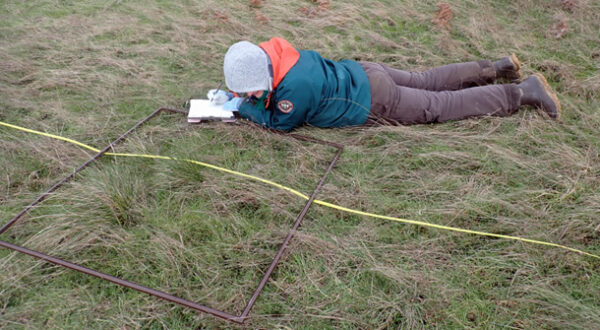
GOERT members Kristen and James Miskelly conducted plant surveys in Helliwell’s coastal bluff meadow restoration areas on March 2nd and 3rd, 2024. Photo of Kristen Miskelly by James Miskelly.
Vegetation monitoring has been conducted annually to assess restoration success through time. The latest surveys in early March, 2024 by GOERT members Kristen and James Miskelly, indicate that there has been successful regeneration of meadow vegetation. However, native vegetation specifically beneficial to Taylor’s checkerspot is not recovering to its full potential. Do you ever wonder why there aren’t a sea of wildflowers in the Helliwell meadows? It’s because of invasive grass thatch build-up and grazing by deer on blooming wildflowers.
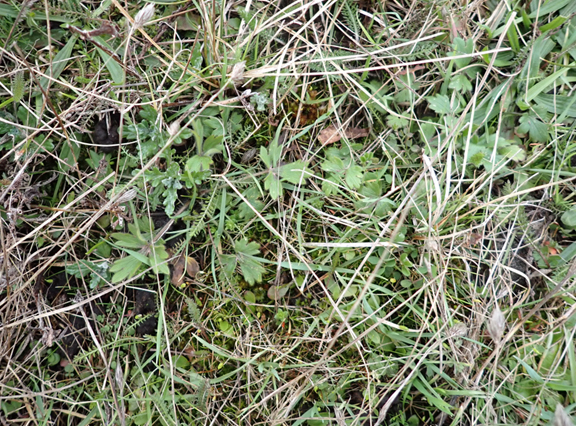
Many native species, such as the yarrow, western buttercups and woolly sunflowers in the photo, are thriving in the restoration areas. Photo by Kristen Miskelly.
Woodboring beetles have also affected the park’s ecology in recent years. Large numbers of shore pine along the bluff towards St. John’s Point have died or are dying due to beetle infestations. Additionally, there have been substantial blowdowns in some areas of the park. The resulting large number of dry branches, dead trunks, and dead fall is creating a potential fire hazard.
In 2020, BC Parks hired a consultant to conduct a fire fuel risk assessment and to write a fuel management prescription for Helliwell Provincial Park. Work on implementing the plan began in 2021 and has continued annually since then. Over these four subsequent years, forest fire fuel has been reduced around the parking lot and partway along the eastern portion of the bluff trail toward St. John’s Point.
Fuel management work consists of cutting, limbing, piling, and burning dead and dying shore pine and invasive English holly. Most dead wood was removed, however, both standing and fallen logs providing wildlife benefits were retained. Although arbutus on site also had dead and dying limbs, dead wood from this species was left in place. The total material removed over these three years of treatments was just under 5,000 m3, or about the same as 500 tandem dump truck loads.
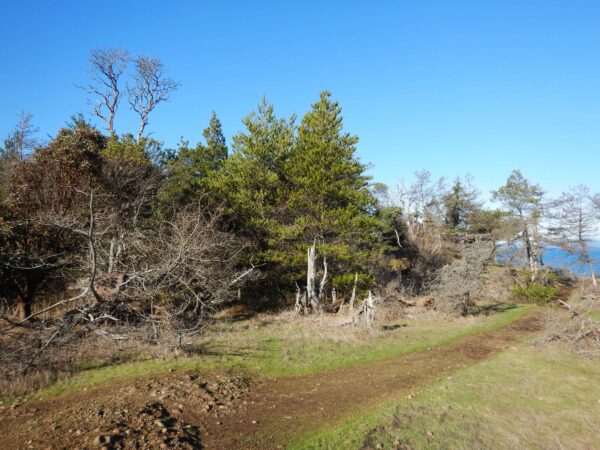
Before fire fuels were reduced. Photo by Bonnie Zand
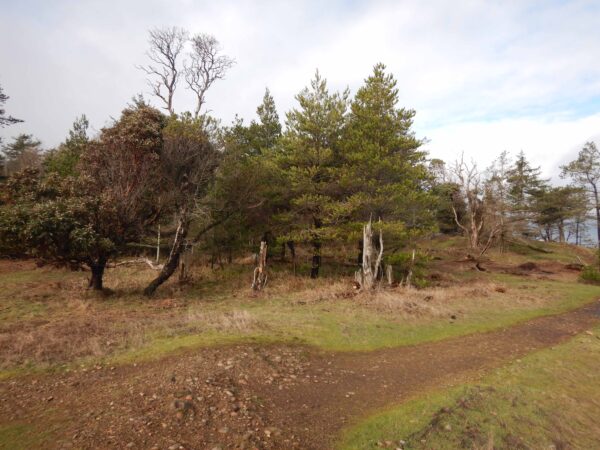
After fire fuels reduced. Photo by Bonnie Zand.
All cut wood was hauled to 13 burn sites distributed along the bluff trail. Custom native plant seed mixtures prepared by Satinflower Nurseries were spread on the burn areas in early March each year.
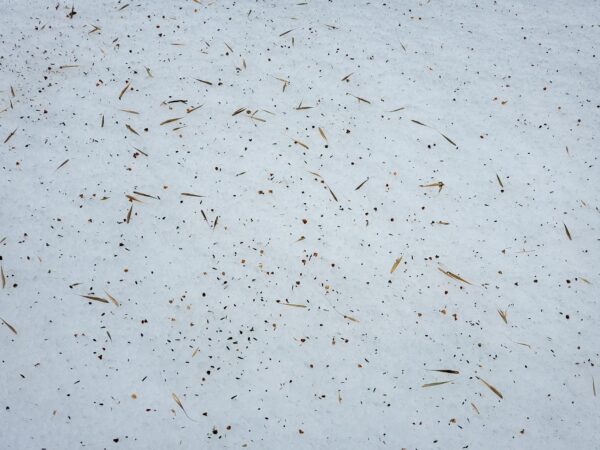
A custom blend of native plant seeds was scattered directly on snow at thirteen burn pile areas on March 3rd 2024. Photo by Kristen Miskelly.

Sites where fire fuels were piled and burned were weeded prior to planting and seeding. Photo by Bonnie Zand.
In previous years, burn sites and other restoration areas were also planted and seeded by volunteers from the Hornby Island Natural History Centre, Hornby Island Community School, Conservancy Hornby Island, Hornby Island Provincial Parks Committee, contractors, and BC Parks staff.

BC Parks conservation coordinator Stephanie Govier, Hornby Island Natural History Centre volunteer Bill Caywood, and Hornby Island Community School students replanted burn pile sites on October 14, 2023. Photo by Bonnie Zand.
According to Neil Wilson of the Hornby Island Natural History Centre, “The planting event with the Hornby Island Community School last fall was a great success.” He adds, “This was the seventh year they have participated in the restoration project in Helliwell and have planted around 25-30,000 plants. An amazing accomplishment!”

Over the last seven years, Neil Wilson and other Hornby Island Natural History Centre volunteers, and students from Hornby Island Community School helped to plant 25,000-30,000 native plants in Helliwell Provincial Park. Photo by Bonnie Zand.
BC Parks and the project team thank Cowichan Tribes, Halalt, Homalco, K’ómoks, Lake Cowichan, Lyackson, Penelakut, Qualicum, Snaw’Naw’As, Stz’uminus, Tla’amin, We Wai Kai, and We Wai Kum First Nations for allowing us to restore ecosystems in their traditional territories. There has also been a lot of local assistance for the project from Helliwell Park neighbours in High Salal Ranch Strata and community volunteers.
The recovery project has benefited from funding and in-kind contributions from the BC Parks Licence Plate Program, the Habitat Conservation Trust Foundation, the Environment Canada Habitat Stewardship Fund, the B.C. Ministry of Water, Land and Resource Stewardship, the B.C. Ministry of Environment and Climate Change Strategy, and others.
The Taylor’s Checkerspot Butterfly Recovery Project Team includes biological consultants and representatives from the B.C. Ministry of Water, Land and Resource Stewardship, BC Parks, Denman Conservancy Association, Garry Oak Ecosystems Recovery Team, Greater Vancouver Zoo, Mosaic Forest Management, Wildlife Preservation Canada, and others.
Learn more about the Taylor’s checkerspot butterfly: goert.ca/activities/ and gov.bc.ca/taylors-checkerspot